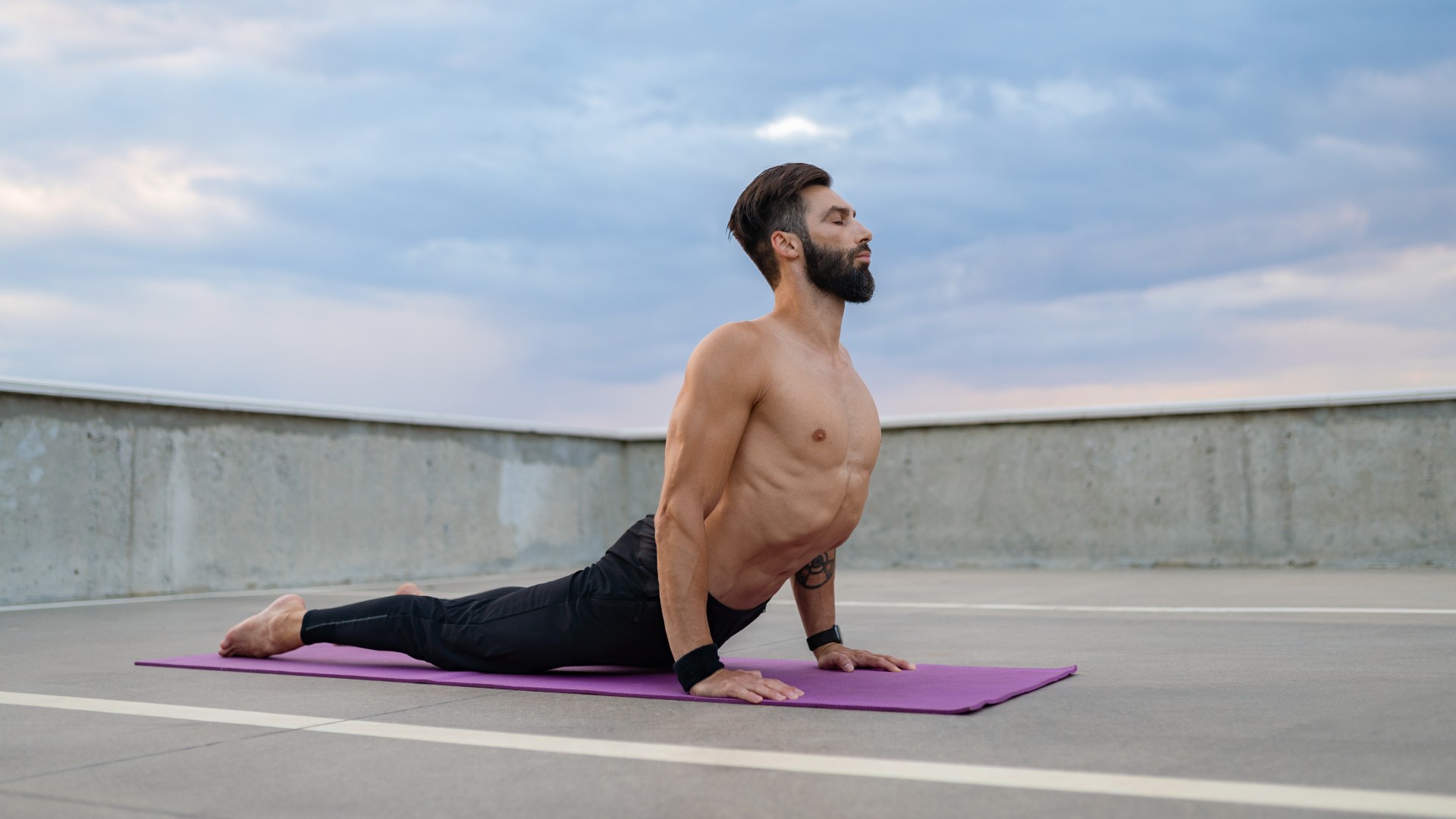
Build strength, stability and focus using this 10-minute yoga routine and one of the best yoga mats to find your flow.
“This is a short ten-minute energizing yoga flow practice for more strength, stability and focus that really gets you expanded and grounded,” the Breathe and Flow yoga duo says. It’s a great way to start your morning or throughout the day if you sit for prolonged periods at a desk.
Below, we share the short but effective 10-minute routine, plus some of the benefits of a yoga flow practice.
Watch Breathe and Flow’s 10-minute yoga routine:
Bre and Flo are qualified yoga teachers, certified in functional movement screening and animal flow and are also Functional Range Conditioning Mobility Specialists. In short, they know a thing or two about yoga and how to move for maximum efficiency.
This particular routine is recommended for anyone who needs to fit movement into the day, Flo says, not dissimilar to the technique of exercise snacking.
You’ll start at the back of your mat in a standing forward fold, which gives you the chance to bring focus to your breathing and set yourself up for the routine. Aptly named yoga instructor Flo recommends activating your ujjayi breath, which means inhaling and exhaling through your nose.
It’s a type of cleansing yoga breath used to slow the heart rate and build heat in the body by sealing your lips and creating a slight restriction at the back of your throat. It’s one of the things I wish I had known as a yoga beginner sooner, but only use it if you feel comfortable.
I describe this practice as slow and strong rather than the fast-paced transitions of vinyasa; this will test your ability to use your strength, control, balance and focus to drive movement, hold muscles under constant tension and boost stability over time.
This is a smart way to focus on form, transitions and building intensity if you only have a short amount of time to get your yoga fix. Moving slowly also means paying more attention to what your body is doing and how your muscles feel during each posture — something we should do more often during any exercise to improve muscular activation and contraction and build our neuromuscular pathways.
Is doing 10 minutes of yoga a day enough?
Although exercise snacking — a trend that involves adding short bouts of exercise into your daily routine — seems like a fad, there’s some evidence (like this study published in Exercise and Sports Science Reviews) that suggests bursts of vigorous exercise lasting as little as 60 seconds could improve your cardio fitness.
Although this 10-minute yoga session wouldn’t be classified as “vigorous,” building a consistent yoga practice, however long, has plenty of benefits. Yoga can build flexibility, boost mobility, strengthen joints, muscles, bones and ligaments, increase feelings of mindfulness and reduce anxiety and low mood, helping to build mental strength.
It’s amazing what an hour of yoga can do for your body, but consistency is crucial for hitting your physical or mental health goals. Making exercise feel more approachable and accessible can breed consistency, whether you want to build strength, lose weight, or anything in between. If splitting up your exercise throughout the day or week improves consistency, then yes, 10 minutes is beneficial.
One study published in Evidence-based Complementary and Alternative Medicine suggests yoga can be useful for improving health and “lifestyle-related health conditions,” citing the frequency of home practice as more important than time spent practicing or how many classes someone takes. Even 10 minutes could pack some health benefits.
Can yoga help you lose weight?
Any form of exercise can help support weight loss, but a yoga practice alone is unlikely to blitz calories. You’ll need to consider other lifestyle changes like quality sleep, diet and moving more often throughout the day. Besides, there are many other benefits of yoga to be gained.
If weight loss is one of your goals, faster-paced practices like vinyasa, power, Rocket and hot yoga could increase your heart rate and make classes more challenging. For example, a study published in the Journal of Physical Activity and Health found that 60 minutes of vinyasa flow burned similar calories to brisk walking.
!["[T]he First and Fifth Amendments Require ICE to Provide Information About the Whereabouts of a Detained Person"](https://images.inkl.com/s3/publisher/cover/212/reason-cover.png?w=600)






